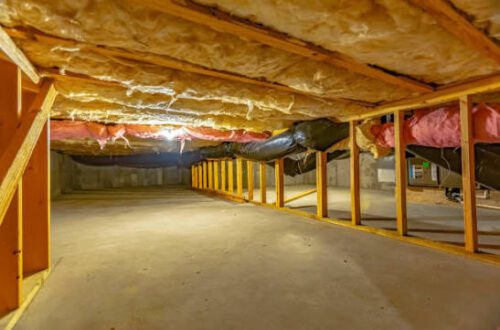Did you know that you’re more likely to be killed by a falling tree than a shark? Hundreds of people fall victim to dead trees every single year.
The best way to protect yourself and your home is to identify a dying tree and deal with it before it can cause damage. Trees will let you know well in advance if there’s no saving them.
You’ll notice branches scattered around your yard. The bark will peel, and the tree will begin to lean over. If the tree is covered in insects or you can see fungus, it’s most likely time to chop it down.
These are only a few signs that you should be on the lookout for. Keep reading to learn more.
There Are Sticks All Over Your Yard
Healthy trees have flexible branches. You might be able to snap them, but you’ll have to put in a great deal of effort.
That means it’s not natural to see a bunch of branches scattered around your yard. That’s a clear sign that you’ve got a dead tree on your hands.
The Bark Is Peeling
When you don’t get enough nutrients, the condition of your skin may give it away. Plants work sort of the same way. If a tree isn’t getting the water it needs, the bark will begin to peel and flake away.
The good news is that you might be able to save it by watering the tree and re-attaching the bark.
If the plant’s condition doesn’t improve, it could be suffering from a disease. All you can do for it at that point is call a tree removal service.
Dieback
If you think that you’ve got a tree dying, look up at the canopy. If there are leafless branches sticking out over the top of it, that’s known as dieback.
Usually, this problem spans from a root issue. The soil conditions aren’t the best, or there’s a fungus there sapping nutrients away from the tree. In some cases, you can save the plant. Contact a tree company to find out what you can do.
Perform the Scratch Test
Have you already noticed some of the signs discussed so far? To learn for sure, if the tree is dying, scratch away a small piece of bark.
If the color under the bark is green, there are plenty of nutrients flowing to the tree, and you’ve got nothing to worry about.
You Can Visually See Fungus and Rot
Rot and fungus on a tree aren’t a good sign. Once the infection spreads to a certain point, you’ll have to cut down the tree.
Before you grab a chainsaw, get in touch with an arborist. They might be able to stop the fungus by cutting off the infected limbs.
The Tree Is Leaning Over
Sometimes, trees grow at a funky angle. They’ll spend much of their lives leaned over to some degree.
Even if the lean isn’t naturally occurring, the tree still might not be deathly injured. It could be a simple root problem. That doesn’t mean the tree can stick around, though.
You might be able to put off the inevitable by bracing the tree, but in most cases, it’s not worth it. If it were to topple, it could fall on top of your house, or worse, another person.
There’s a Lot of Dead Wood
A tree with a few dead branches isn’t anything unusual. You can cut the limbs away and go about your day. If a good majority of the branches are dry and brittle, that’s a different story, however.
Your tree is dying. If you leave it alone, the branches could fall and cause some serious property damage.
The Tree Is Leaking Sap
For some species of trees like elms leaking sap is an everyday affair. For others, it’s a sign of an insect problem.
When certain pests bore into trees, it can cause them to ooze sap. It’s almost as if the insect creates an open wound. Several species of insects zap the nutrients out of a tree and destroy it from the inside out.
There’s Sawdust Gathered Around the Tree
High amounts of sap isn’t the only sign that insects have made one of your trees their home.
Sawdust is also a huge red flag. As pests borrow themselves into a tree, they may leave deposits of the stuff behind.
Dead Leaves
It’s the middle of August, and one of your trees hasn’t decided to leaf out yet. Some species tend to be late bloomers, but if you’re not seeing any leaves that late into the year, that means something’s wrong.
The roots of the tree might be damaged to some degree. The plant could also be diseased, or it could be infected by pests.
Speaking of dead leaves, sometimes, when they’re exposed to high amounts of moisture, fungus will form. It’s not pretty to look at, but for the most part, it’s harmless.
You prevent it by pruning your trees on a normal basis. Doing so will allow for air circulation and cut back on moisture exposure.
You’ve Seen Termites
Termites are a death sentence for any tree if you don’t catch them fast enough. They’ll eat away at the wood and cause the tree to become unstable. If you don’t cut it down, it will eventually topple on its own.
When you notice these little pests, take the colonies out right away with termiticide. You should also consider setting up traps around your property.
Of course, the best way to get rid of termites is to prevent them. Dead stumps attract them like a beacon. Get rid of them.
You should also avoid stacking firewood up outside and be careful with mulch.
There Are Signs of Root Damage
Since roots are underground, spotting damaged ones can be tricky. You’ve already read a few signs of root damage, but they’re not the only ones you should look out for.
If you’ve had some construction work done near your home, and your trees are beginning to wither, there’s a chance that the roots were hacked into.
If the tree’s root system is partially visible, you’ll need to take special precautions to protect it from the elements. Tiny yellow leaves are also a bad sign.
Handling Your Dying Tree
Now that you’ve identified a dying tree, it’s time to do something about it. If you leave it to its own devices, you’re putting yourself and your family in danger. Here are a few things that you can do.
Talk to an Arborist
The first thing you should do is get in touch with an on call tree service. They’ll be able to tell you if the tree needs to come down. If the plant can be saved, they’ll know how to go about it.
Hiring a professional might be expensive, but under no circumstances should you try to take care of the job on your own to save money. Arborists have the skills and equipment needed to cut down the tree in the safest way possible. You don’t.
Decorate It
If the tree doesn’t pose a danger, you might as well have a little fun with it. You can decorate it for Halloween and Christmas.
You can grab a bucket of paint and turn the tree into an art project or engrave it.
Mulch It
Your tree is dead, but it can still serve a purpose. You can use it for the betterment of the other plants in your yard by having it chopped down into mulch.
Mulch holds in moisture and can protect plants from winter damage. If your tree was a cedar or pinewood, its chips will keep certain pests away from your garden. Mulch also does wonders for weed control.
Lumber
If you have no idea how you’re going to use your dead tree, contact your local sawmill.
A representative from the mill might be willing to come get your tree. The best part is that you won’t have to lift a single finger. They’ll bring their equipment to your home and chop down the tree for you.
Identify the Dying Trees in Your Yard
A dying tree can pose a huge risk to you and your family. If you don’t identify them in time and have them cut down, they could fall on your house or another person.
Most trees give you plenty of notice before they get to that point. Be on the lookout for dead limbs, peeling bark, termites, fungus, and dead wood.
For tips that will help you take care of your trees and prevent them from dying, visit the Home & Garden section of our blog.





